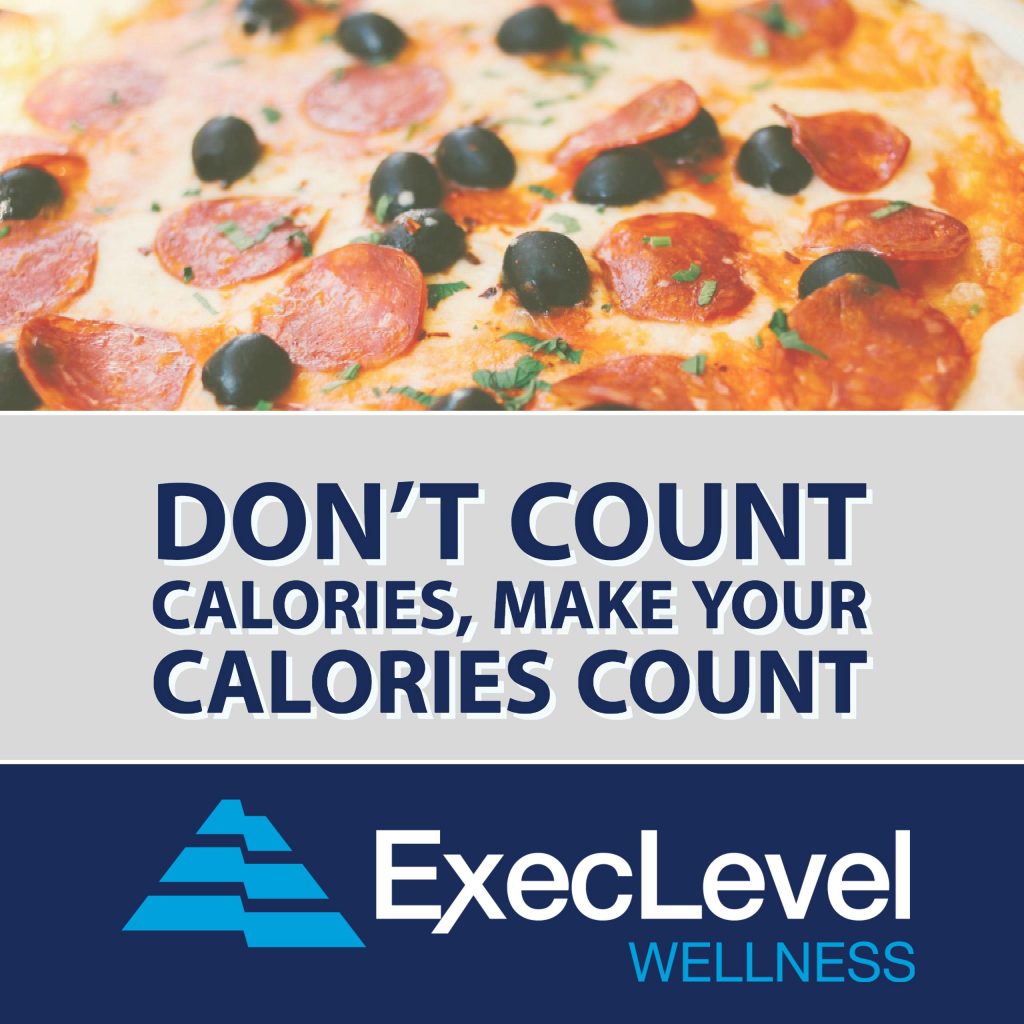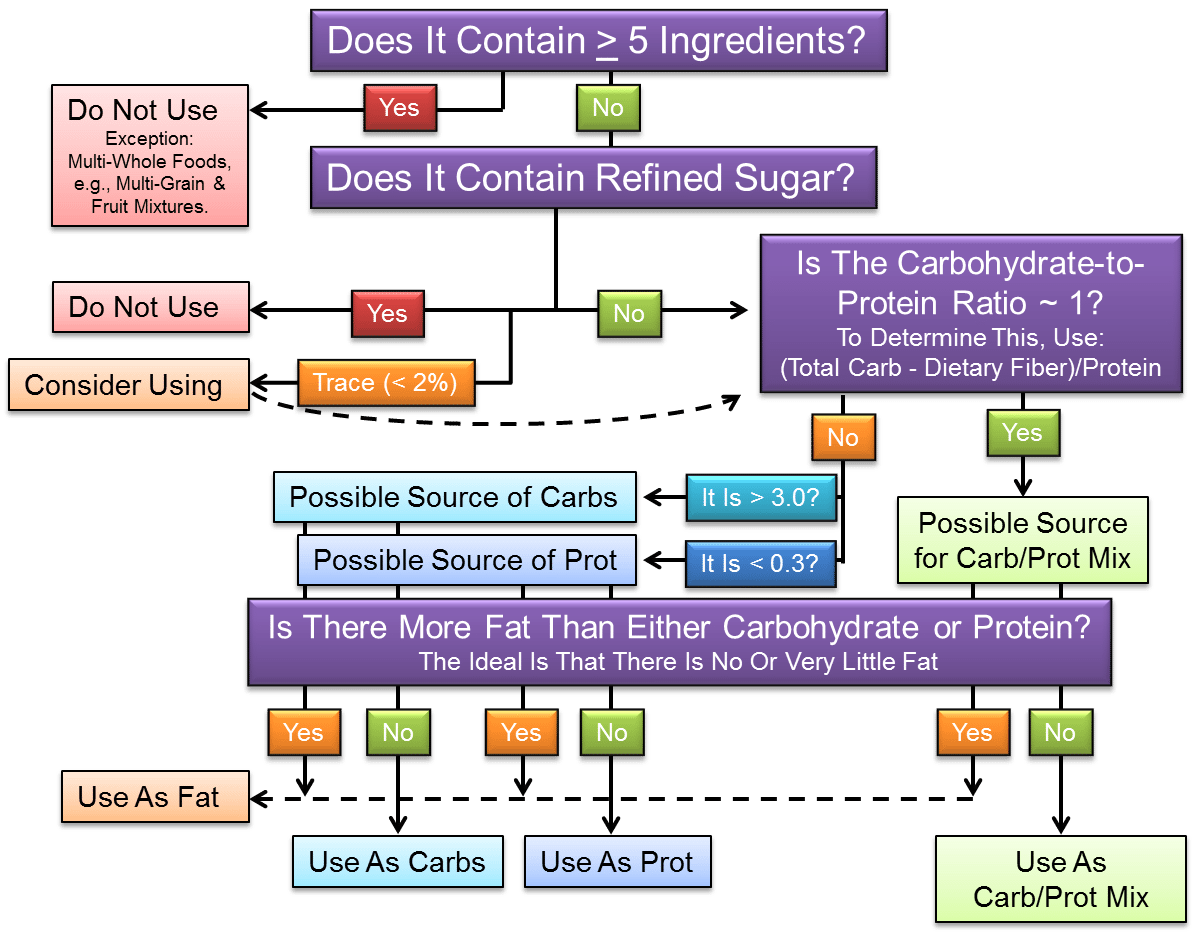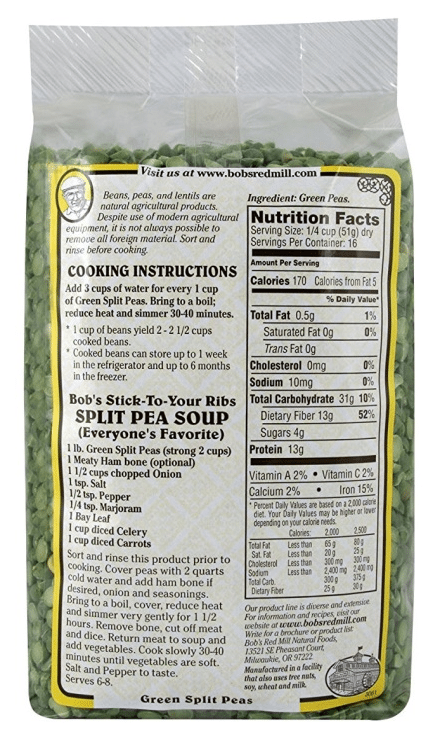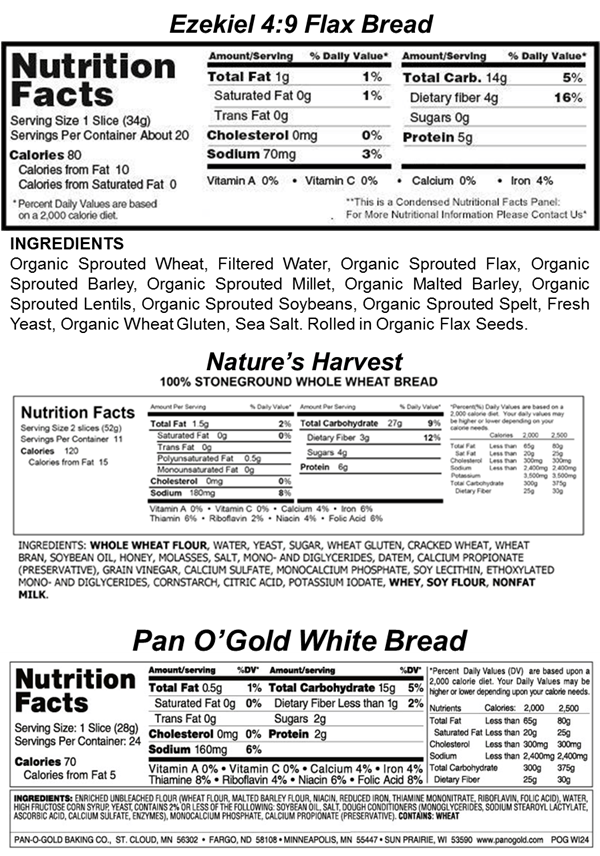It strikes me that people generally look at foods only in terms of calories. Afterward, if at all, do they view foods compositionally – i.e., in terms of macronutrients (carbohydrates, protein & fat). Consequently, they run the risk of unhealthy eating, even when consuming an optimal amount of calories. In short, they may eat something because it aligns with their calorie intake, but it may be completely out of whack with what they need nutritionally.
So before we even consider the calorie count of the food, we should first ask whether we should even eat the food at all. Answering this question requires that we take the time to figure out what the food is (with reference to macronutrients).
Certain foods are fairly easy – e.g., lean meat is pure protein, starch is pure carbohydrates, butter is pure fat – but most foods are a mix of the macros. Here is where we look at the Nutritional Facts and INGREDIENTS on the packaging, and begin to ask a series of questions.

1) Does it contain more than 5 ingredients?
Look at the INGREDIENTS. Heavily processed foods often contain a whole list of ingredients, many of which are added chemicals. The general rule is that if you can’t pronounce the ingredients, you probably don’t want to eat it. So, if the INGREDIENTS contain a bunch of words you don’t know, don’t eat it. Exceptions to this rule are foods that are made from multiple whole ingredients – like multi-grain or multi-fruit products.
2) Does it contain refined sugar?
While still looking at the INGREDIENTS, notice where sugar is listed. If it is toward the front of the list, you probably don’t want it. If it is toward the end, or in the <2% category, you can consider it. Also, other added sugars may be in there. Look for anything that is a syrup, or ends in “ose” or “in”; like corn syrup or glucose or maltodextrin. The same rules apply for these – if they are major ingredients, you likely don’t want them1. Lastly, look at Sugars on the label under Total Carbohydrate. Remember that this is the amount of all the sugars in the product, so even without it being added in, some foods naturally contain sugars – like fruits. If this number seems very high to you, don’t eat it.
3) Is the carbohydrate-to-protein ratio ~ 1?
At this ratio, I know that the balance of carbs-to-protein is automatically what I want to eat 2. To determine the ratio, subtract the Dietary Fibers from Total Carbohydrates, and divide the result by Protein 3. Note that it is rare that the number will turn out to be exactly 1, so use a target range. In the flow decision tree, I’ve used a very broad range of 0.3 – 3 before the food is considered solely as a possible carb or protein.
4) Is there more fat than carbohydrate or protein?4
Personally, I’m looking for fat to be as close to zero as possible. I can always balance my fat intake with butter or oil-based salad dressing, or add in fat and protein with an egg or two. If there is fat present, gauge it relative to the two other macros, and if it is more than either of them, consider the food as a fat.
So, at the end of the decision tree, we end up with how to categorize a food.
Let’s run through some examples:
Split Peas
This is a fairly easy one because there is only one ingredient – Green Peas – which we can pronounce. There is no added sugar, and the natural sugar is fairly low, so we now look at the carb-to-protein ratio. At (31- 13)/13 = ~1.4, this is a pretty good Carb/Prot mix. But before we move ahead, we’ll ask the question of the fat, which at 0.5 grams is quite a bit lower than the other macros, so we’ll call this a Carb/Prot mix.
Now, as you might imagine, split peas on their own may not be the most appetizing thing on the menu, so you generally make soup out of them. The recipe on this package is fairly straight forward and adds in a little more protein from the ham, and a few carbs with the carrots. Regarding Calories, the entire bag (16 servings) has 2,720 calories. Adding 200 grams of each of lean ham and carrots adds another 1,600 calories for a total 4,320, so a serving would have 270 calories, or which about half stems from carbs. I’ll take this a step further and make a supercharged version by using the pound of peas in 5-6 quarts of water, and add in ~ 4 pounds of very lean diced ham (predominantly protein) and the same amount of diced potatoes (predominantly carbohydrates). What I end up with is low-fat pea soup that I can eat as a full meal, and that has a ~1:1 ratio of carbs-to-protein.
Party Pizza
 This one illustrates how many things can go wrong at the food packaging plant. First, instead of 5 ingredients, there are about 50. Notice that the word Imitation shows up a couple of times, which is a strange word to use when referring to your food – “Would you like an Imitation Steak to go along with your wine”? I think it’s safer to serve your dinner guests Imaginary food than Imitation food. So, the Party Pizza is obviously ruled out at the first question, but if we must eat it, let’s find out how to treat it. Going through the rest of the decision tree, we find out that there is surprisingly little added sugar, and that we would tentatively treat it as a Carb/Prot mix [(37-2)/12 = ~3]. That is until we notice that there is more fat than protein, so we treat it as fat. In the end, if we still must eat it, we look at Calories and realize that 300 of the 350 calories in a serving is tied up in fat (150 calories) and carbs (150 calories).
This one illustrates how many things can go wrong at the food packaging plant. First, instead of 5 ingredients, there are about 50. Notice that the word Imitation shows up a couple of times, which is a strange word to use when referring to your food – “Would you like an Imitation Steak to go along with your wine”? I think it’s safer to serve your dinner guests Imaginary food than Imitation food. So, the Party Pizza is obviously ruled out at the first question, but if we must eat it, let’s find out how to treat it. Going through the rest of the decision tree, we find out that there is surprisingly little added sugar, and that we would tentatively treat it as a Carb/Prot mix [(37-2)/12 = ~3]. That is until we notice that there is more fat than protein, so we treat it as fat. In the end, if we still must eat it, we look at Calories and realize that 300 of the 350 calories in a serving is tied up in fat (150 calories) and carbs (150 calories).
Breads
 So, we’ve looked at a couple of easy examples on extremes of the food spectrum. Now we’ll compare something in the middle, like breads. Here are three different breads, each of which has a lot of ingredients. But as you can see, the ingredients in Ezekiel 4:9 Flax Bread (EZ) essentially amount to a bucket of grain. They are all whole-foods. The Nature’s Harvest (NH), although whole wheat, also contains a number of other things that likely take it out of consideration. Even more so for the Pan O’Gold (POG) white bread. Regarding added sugar, the EZ bread has none, whereas the other two have about the same amount – added as either sugar or high fructose corn syrup (note that the numbers for NH are for two slices instead of one). Moving on, the carb-to- protein ratio of the three breads are; 2, 4 and 7, for the EZ, NH and POG, respectively. None of them have a very large amount of fat.
So, we’ve looked at a couple of easy examples on extremes of the food spectrum. Now we’ll compare something in the middle, like breads. Here are three different breads, each of which has a lot of ingredients. But as you can see, the ingredients in Ezekiel 4:9 Flax Bread (EZ) essentially amount to a bucket of grain. They are all whole-foods. The Nature’s Harvest (NH), although whole wheat, also contains a number of other things that likely take it out of consideration. Even more so for the Pan O’Gold (POG) white bread. Regarding added sugar, the EZ bread has none, whereas the other two have about the same amount – added as either sugar or high fructose corn syrup (note that the numbers for NH are for two slices instead of one). Moving on, the carb-to- protein ratio of the three breads are; 2, 4 and 7, for the EZ, NH and POG, respectively. None of them have a very large amount of fat.
Myself, I’d eat the Ezekiel bread. It has understandable ingredients, no added sugar, and a carb-to-protein ratio that is pretty close to what I want as a Carb/Prot mix. If for some reason I went for the
other two, I’d treat them as carbohydrate, especially the white bread. Finally, I’d consider the Calorie content to figure out how much I want to eat. All three have about the same calorie per gram serving of ~ 2.4 cal/gram, so I might eat 50 grams for ~120 calories. But because of the different Carb/Prot ratios, I’m looking at significantly lower carb calories for the EZ (60 calories from carbs) than NH (108 calories from carbs) and POG (114 calories from carbs). As carbs go toward energy and fat production, and protein goes toward muscle maintenance, you can see why the EZ is a better choice.
In the end, you can see that taking a few minutes to read a label might make a big difference in the composition of what you are eating.
1 Remember, we are interested in the macronutrients, and although sugar is a carbohydrate, we treat it as a separate entity.
2 Regarding macronutrients, I generally eat a 40:40:20 (Carbs:Prot:Fats) balance (by weight). Each individual should dial in their own number dependent on their personal macronutrient balance.
3 I.e., (Total Carbohydrate – Dietary Fiber)/Protein. Fiber is not included because it does not contribute to the overall calorie count.
4 We’ve noted that it is rare for a food to contain only one macronutrient, and most have some quantity of all three. We could have asked this question at the very beginning, but we wouldn’t have determined how much of the other macros (in particular carbs) are present in the food. Instead, we ask the question at the end of the decision tree so that we know how much of the other macros are coming along when we view the food as fat.
Want to learn more?
Most people know that regular movement, eating well, sleep, and stress management are important for looking and feeling better. Yet they need help applying that knowledge in the context of their busy, sometimes stressful lives.
That’s why we work closely with ExecLevel Wellness clients to help them improve their health… no matter what challenges they’re dealing with. We believe that how you feel greatly impacts your ability to lead and age well in all areas of life.

